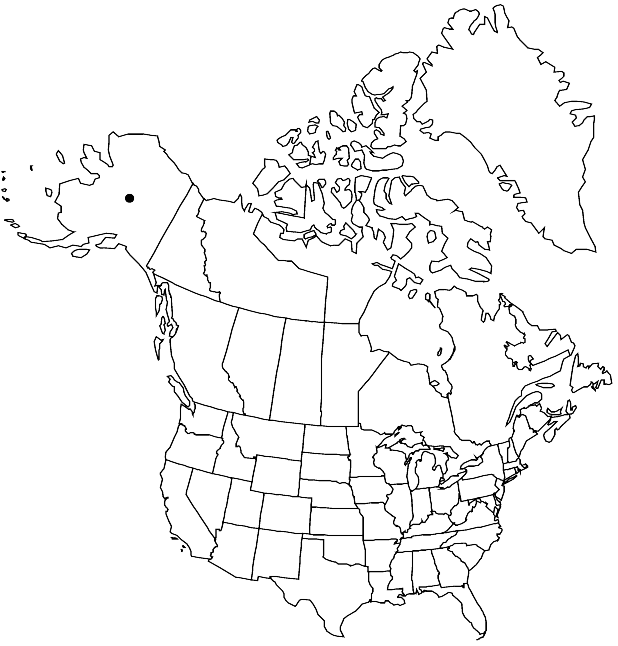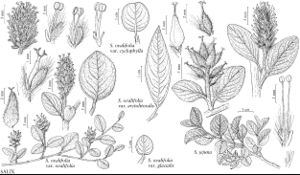Salix ovalifolia var. cyclophylla
Proc. Natl. Acad. Sci. U.S.A. 21: 184. 1935.
Leaves: petiole 2–7 mm; largest medial blade subcircular to circular, 13–28 × 7–18 mm, 1–1.5 times as long as wide, base subcordate, cordate, or convex, apex convex, rounded, or retuse, abaxial surface glabrous, pilose or villous. Catkins: staminate 12.5–15.5 × 8–10 mm, flowering branchlet 3–12 mm; pistillate stout, subglobose, or globose, 10–31 × 6–12 mm, flowering branchlet 3.5–15 mm. Staminate flowers: abaxial nectary 0.8–1.1 mm, adaxial nectary 0.7–1.1 mm, nectaries connate and cup-shaped. Pistillate flowers: abaxial nectary absent, adaxial nectary ovate, 0.5–2.1 mm; stipe 0.2–1.4 mm; ovary glaucous or not, usually glabrous, sometimes pubescent, or villous. Capsules 5.2–6.5 mm.
Phenology: Flowering mid May-late Jul.
Habitat: Arctic and possibly subarctic, shores of lakes and lagoons, Empetrum tundra, in moss on rocky pavements, meadows, beach ridges
Elevation: 10-600 m
Distribution

Alaska, Asia (Chukotka, Russia).
Discussion
Selected References
None.
